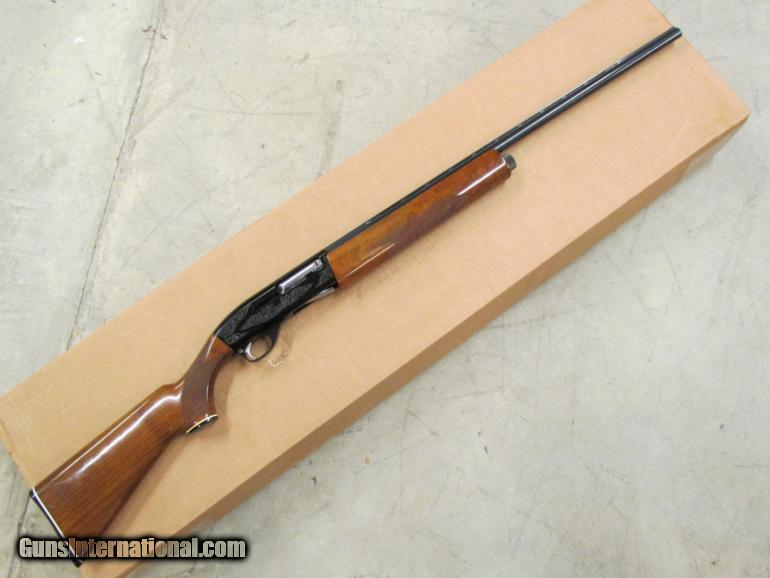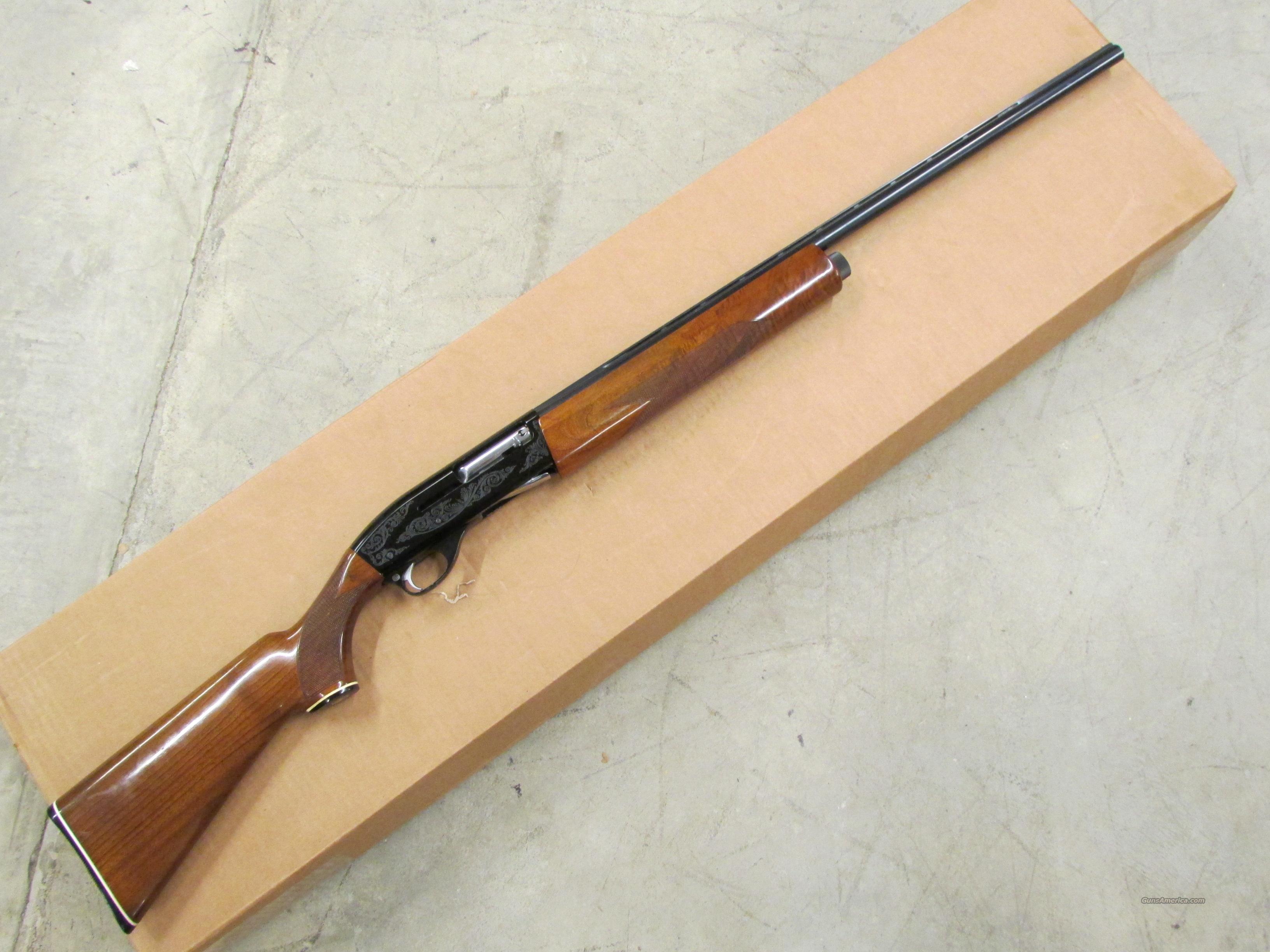Common problems with the Smith & Wesson Model 1000 include issues with cycling and ejection. Users also report occasional misfires.
The Smith & Wesson Model 1000, a semi-automatic shotgun designed for reliability and performance, has been a popular choice among enthusiasts and professionals alike. Despite its strengths, some owners encounter challenges with its operation. These issues can range from minor inconveniences to more significant problems that may require professional attention.
Understanding these potential drawbacks is crucial for current and prospective owners. By acknowledging and addressing these concerns, users can ensure their Smith & Wesson Model 1000 continues to deliver the high performance it’s known for. Proper maintenance and occasional checks can often mitigate these problems, maintaining the shotgun’s esteemed status among firearms enthusiasts.

Credit: www.youtube.com
Introduction To The Smith & Wesson Model 1000
The Smith & Wesson Model 1000 stands as a beacon in firearm history. Its sleek design and reliable performance have captivated gun enthusiasts. This semi-automatic shotgun promises both power and precision. Yet, some users report issues that merit discussion.
The Allure Of The Model 1000
The Model 1000’s charm lies in its balance of form and function. It boasts a reputation for smooth handling and easy maintenance. Its lightweight build makes it a favorite among sport shooters and hunters alike.
Historical Context And Production Timeline
The Model 1000 first graced the markets in the 1970s. Smith & Wesson sought to dominate the shotgun scene with this model. Its production spanned over a decade, evolving with several variations. The line was eventually discontinued, leaving behind a legacy of innovation and quality craftsmanship.
Common Issues Faced By Owners
Owners of the Smith & Wesson Model 1000 often report specific problems. These issues can affect performance and reliability. We will explore the most common problems faced by owners below.
Feed And Ejection Failures
Many users experience feed and ejection issues with their Model 1000. Let’s delve into the details:
- Failure to Feed (FTF): This occurs when a shell does not enter the chamber properly.
- Failure to Eject (FTE): Sometimes, spent shells get stuck, preventing new shells from loading.
Regular maintenance can help minimize these failures. Clean the action and replace worn parts to improve reliability.
Trigger Group Complications
The trigger assembly is crucial for smooth operation. Here are common trigger-related issues:
| Problem | Symptom | Solution |
|---|---|---|
| Sticky Trigger | Trigger pull feels sluggish. | Clean and lubricate trigger components. |
| Broken Springs | Trigger fails to reset. | Replace the springs. |
Inspect the trigger group during cleaning. Replace parts as necessary to avoid malfunctions.
Maintenance Challenges
Maintenance Challenges often arise with the Smith & Wesson Model 1000. This shotgun, while renowned for its performance, can present owners with some upkeep hurdles. Proper care ensures longevity and reliability. Let’s explore some common issues.
Difficulty In Disassembly And Cleaning
Regular cleaning is vital for any firearm, and the Model 1000 is no exception. Users often struggle with its disassembly process. The shotgun’s design can be intricate, making it tricky to take apart for a thorough clean. Here are steps to ease the process:
- Ensure the gun is unloaded.
- Remove the barrel by unscrewing it from the receiver.
- Take out the trigger assembly with care.
- Clean each part separately using the right tools.
- Reassemble the shotgun, checking for smooth operation.
Sourcing Replacement Parts
Over time, parts wear out and need replacement. Finding parts for the Model 1000 can be tough. Here’s a quick guide to help:
| Part | Source |
|---|---|
| Barrels | Specialty gun shops |
| Stocks | Online retailers |
| Internal components | Manufacturer or gunsmith |
Always choose quality parts to maintain your shotgun’s performance. Consult with a professional gunsmith for the best results.

Credit: www.gunsinternational.com
The Recoil Conundrum
The Recoil Conundrum raises eyebrows among Smith and Wesson Model 1000 users. This popular shotgun, known for its reliability and performance, faces challenges with its recoil system. Let’s dive into the problems and explore aftermarket solutions.
Recoil System Malfunctions
Recoil system failures lead to discomfort and unreliable performance. Users report several issues:
- Hard kickback
- Slow cycling of shells
- Complete failure to eject spent cartridges
These problems often stem from dirty recoil components or worn-out parts.
Aftermarket Solutions
Thankfully, solutions exist. Consider these steps to improve your shotgun’s recoil system:
- Clean the recoil system regularly.
- Replace worn-out parts with high-quality components.
- Install an aftermarket recoil pad to reduce kickback.
Many users find these steps significantly enhance shooting experience.
Barrel Concerns
The Smith and Wesson Model 1000 is a popular shotgun. Yet, it has its issues. One major area is Barrel Concerns. Let’s dive into the details.
Problems With Barrel Alignment
Barrel alignment is crucial for accuracy. Misalignment can cause several problems:
- Poor shot accuracy
- Increased wear on the barrel
- Difficulty in aiming
Regular checks can help spot alignment issues early.
Wear And Tear Over Time
All guns face wear and tear. The Model 1000’s barrel is no exception. Signs include:
| Sign | Effect |
|---|---|
| Rust | Can damage the barrel’s interior |
| Scratches | May affect bullet trajectory |
| Worn rifling | Reduces accuracy over distance |
Maintenance is key to managing these issues.
Stock Issues
Many Smith and Wesson Model 1000 owners report stock issues. These issues can affect both the gun’s performance and aesthetic. Let’s dive into common problems with the stock.
Cracks And Breakage In Wooden Stocks
Wooden stocks on firearms can crack or break. This is true for the Smith and Wesson Model 1000. The causes range from wear and tear to poor maintenance. Signs of damage include visible cracks or splits. A cracked stock can lead to unreliable performance. It might even render the shotgun unsafe to use.
- Check your stock regularly for signs of damage.
- Address cracks quickly to prevent them from worsening.
- Protect your stock from extreme temperatures and humidity.
Fitting Aftermarket Stocks
Many gun enthusiasts like to customize their firearms. They often replace the original stock with an aftermarket one. The Model 1000 is no different. But, fitting a new stock can be tricky. Aftermarket stocks may require modification to fit properly.
| Step | Action |
|---|---|
| 1 | Choose a compatible stock. |
| 2 | Measure your gun’s dimensions. |
| 3 | Prepare tools for adjustments. |
| 4 | Test fit the stock carefully. |
| 5 | Secure the stock with proper screws. |
Remember, a well-fitted stock improves accuracy and handling. It also ensures your shotgun looks great and functions smoothly.
User Experience And Reliability
User Experience and Reliability are critical aspects when evaluating firearms like the Smith & Wesson Model 1000. Owners expect consistent performance and dependability from their shotguns. Let’s delve into personal accounts and compare this model’s reliability with other shotguns.
Personal Anecdotes From Owners
Many users have shared their experiences with the Smith & Wesson Model 1000. These stories give us real-world insights into the shotgun’s performance. Here are a few examples:
- John Doe: “I’ve used it for years without a hitch.”
- Jane Smith: “Had issues with ejecting shells, took it to a gunsmith.”
- Mike Brown: “It’s my go-to for hunting, never let me down.”
Comparative Reliability With Other Shotguns
When stacked against its competitors, the Model 1000’s reliability can vary. Here’s a snapshot:
| Shotgun Model | Reliability Rating |
|---|---|
| Smith & Wesson Model 1000 | Good |
| Remington 870 | Excellent |
| Mossberg 500 | Very Good |
| Benelli Super Black Eagle | Excellent |
The Model 1000 is reliable, but some models outshine it. Each shotgun has its strengths and weaknesses. Choose based on your specific needs.

Credit: www.gunsamerica.com
Troubleshooting And Repairs
Owners of the Smith and Wesson Model 1000 know it’s a reliable firearm. Like any machine, it may need troubleshooting and repairs. This guide helps you fix common issues. It also tells you when to call a professional gunsmith.
Diy Fixes For Common Problems
Most issues with the Model 1000 are fixable at home. Here are quick fixes:
- Cleaning: Regular cleaning prevents many problems.
- Jamming: Check and replace old ammunition.
- Feeding issues: Inspect the magazine for damage.
Follow the user manual’s steps for these fixes. It ensures your safety and the gun’s integrity.
When To Seek Professional Gunsmith Services
Sometimes, an expert’s help is best. Here’s when you should consult a gunsmith:
| Problem | Action |
|---|---|
| Broken Parts | Seek a gunsmith for precise replacements. |
| Complex Mechanism Issues | Professional diagnosis prevents further damage. |
| Warranty Repairs | Use authorized service to maintain warranty. |
Professional services ensure your Model 1000 works safely and reliably.
The Model 1000’s Place In Today’s Market
The Smith & Wesson Model 1000 once stood as a staple in the shotgun world. Its semi-automatic mechanism and durable design made it popular. But how does it fare in today’s market? Let’s explore its collectibility, demand, and modern alternatives.
Collectibility And Ongoing Demand
The Model 1000 holds a special place among collectors. Its historical value and classic build make it sought after. The demand for this model remains steady, with enthusiasts keen on owning a piece of Smith & Wesson history.
- Rarity: Some variants are rare, increasing value.
- Condition: Well-preserved pieces command higher prices.
- Nostalgia: Many seek the Model 1000 for its nostalgic appeal.
Alternatives And Successors
Today’s market offers various alternatives to the Model 1000. These options provide modern features and improved reliability.
| Model | Features |
|---|---|
| Smith & Wesson M&P12 | Bullpup design, dual magazine tubes. |
| Mossberg 500 | Versatile, reliable pump-action. |
| Benelli M4 | Semi-auto, combat-proven performance. |
Successors to the Model 1000 blend modern engineering with traditional values. These shotguns cater to current demands while respecting the past.
Frequently Asked Questions
What Are Common Model 1000 Malfunctions?
Smith and Wesson Model 1000 shotguns may experience cycling issues, misfires, or ejection problems due to worn parts or improper maintenance.
How To Clean A Model 1000 Shotgun?
Disassemble the Model 1000 as per the manual, clean the barrel, action, and components with a solvent, and lubricate the moving parts before reassembly.
Can I Replace Model 1000 Parts Easily?
Certain parts for the Model 1000 can be user-replaced; however, availability may vary and some replacements may require a gunsmith for proper fitting and function.
Are There Recalls For The Model 1000?
Smith and Wesson has not issued recalls for the Model 1000, but owners should regularly inspect their shotguns for wear and replace parts as needed.
What Shells Work Best In A Model 1000?
The Model 1000 typically performs best with high-quality factory-loaded shells that match the shotgun’s specified gauge and length requirements.
Conclusion
Concluding our exploration of the Smith and Wesson Model 1000, it’s clear that knowledge is power. Understanding the common issues with this firearm equips owners to tackle problems confidently. Remember, regular maintenance and professional advice can ensure your Model 1000 operates reliably.
Stay informed, stay safe, and happy shooting.